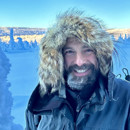Marco Polo described Sri Lanka as one of the most beautiful islands in the world and we agree! This tropical island is known for its varied, beautiful scenery which includes lush mountain slopes, tea plantations, deep blue seas with vast beaches as well as national parks that host exciting wildlife. Read about our guests' experiences in one of the parks below!
We left a cold Sweden behind and were welcomed by Sri Lanka's greenery and warmth. It is a nice contrast to stay a few days in the wilderness camp at Wilpattu National Park - crickets play while the frogs quiver calmly outside the tent during the evenings. Today's jeep tour offered many exotic birds: blue-tailed bee-eaters, painted stork, white-bellied sea eagle, Indian crested hawk-eagle and Sri Lankan junglefowl, which is also Sri Lanka's national bird.
In addition to the endemic toque macaque, which curiously peeked back at us, we also saw grey languras, crocodiles, trionychidae and a number of different deer. All guests had fantastic meetings with two different leopards and several in the group also saw a lip bear strolling around the vegetation. Tomorrow, the journey continues towards Sigiriya and UNESCO's World Heritage site, the impressive "Lion Cliff".





